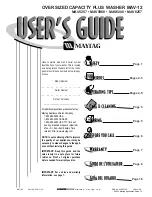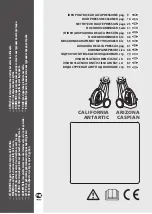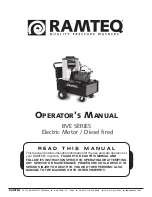
Manual Load Sizes
Large
8-9 shirts, 5 pair polyester
pants or 2 queen size sheets,
4 pillow cases, 2 nightgowns,
1 pair men’s pajamas or 1
queen size bedspread
The manual load size water levels will vary depending on the
wash cycle selected. If the wrong load size is selected, the ma-
chine may add more water.
Wash Temperature
Hot
Hot water is the most effective for cleaning, but it is not recom-
mended for all fabric types (read labels).
Warm
The Warm Wash is useful for providing a thorough cleaning on
light and moderately soiled clothing without damaging fabric
or adding to color fading. Warm water also reduces wrinkling.
Warm water can also be used in the rinse water. Use with non-
colorfast or dark colors, permanent press, silks, woolens, ny-
lon, and acrylic.
Cold
The Cold Wash is ideal for delicate items. Although its cleaning
abilities are not as great as with hot or warm water, it is useful
for colors that bleed easily and for sensitive fabrics.
The Warm/Warm temperature selection will use warm rinse
water. All other rinses use cold water. It is the most beneficial
for fabrics. Cold rinses reduce wrinkling and color fading. In
addition, cold rinses will save money and energy.
NOTE: In wash temperatures colder than 16°C [60°F],
detergents do not dissolve well. This may cause inef-
fective cleaning, or lint and residue to form.
NOTE: Always follow manufacturer’s care labels.
Water Supply Temperature
Water temperature is determined by the temperature of the in-
coming water supply. The washer does not heat or cool the wa-
ter.
For example, northern climates will have much colder incom-
ing water during the winter months. Southern climates will
have much warmer cold water during the summer months.
Operation
©
Copyright, Alliance Laundry Systems LLC -
DO NOT COPY or TRANSMIT
9
Part No. 204949EN
Summary of Contents for Alliance Laundry Systems TR7
Page 2: ......










































